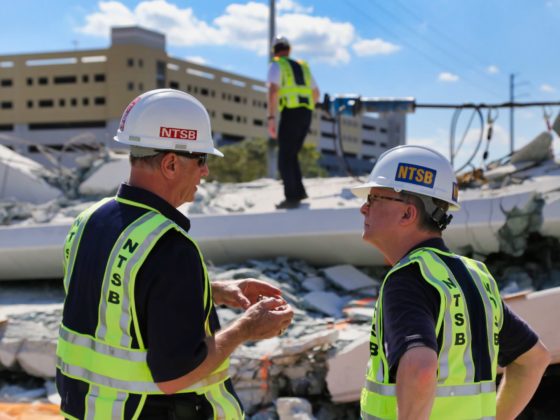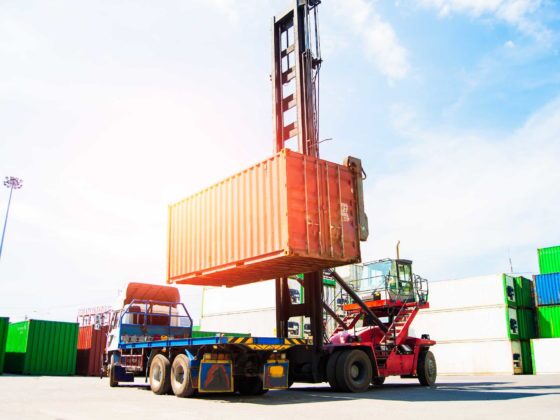The plaintiff in this products liability action, age 27 at the time of the injury, claimed that the defendant lessor of a “scissor” lift was responsible for knee injuries sustained after he fell 15 feet from the scissor lift through the lift’s access way. The plaintiff claimed that the access chains were insufficient to prevent such a fall. The manufacturer of the lift, as well as the manufacturer’s insurance company, filed for bankruptcy during the pendency of the litigation and were dropped as defendants in the case before trial. The defendant lessor argued that the lift was not defective and that the plaintiff failed to attach the chains, which resulted in his fall.
The plaintiff testified that he was working for an independent painting contractor to paint the ceiling of a grocery store and was using a Mark Industries scissor lift in the fully extended position when the machine suddenly jerked, causing him to loose his balance and trip over the chains which closed off the access way, falling 15 feet to the floor. The plaintiff testified that the chains, which were designed to close off the access area of the machine, were’ attached at the time of the fall. The plaintiff’s expert mechanical engineer testified that the lift was defective because the chains were in a configuration which was 29-inches high at the center and presented a danger to the worker, enabling the worker to fall over the top of the chains. This expert also opined that the chains violated OSHA and ANSI Industry Standards requiring that the chains be 42 inches high.
The plaintiff presented a scale model of the lift and computer simulation to demonstrate that if the plaintiff had failed to close the access chains, as alleged by the defendant, he would have landed on his head, rather than his knees. The plaintiff alleged that under Florida law, the defendant leasing company was held to the same standard with regard to strict liability, negligence and implied warranty as that of a manufacturer and the jury was so charged on that issue.
The plaintiffs orthopedic surgeon testified that the plaintiff sustained bilateral comminuted fractures of both knees as a result of the accident and that surgery, arthritic changes and necessity of a wheelchair were possibilities for the future. The plaintiff’s psychologist testified that the plaintiff was dependent on his physical abilities and that his injury left him with depression and other psychological effects. The plaintiff claimed that he could no longer work as a painter at $9.38 per hour. The plaintiff’s vocational rehabilitation expert opined that perhaps the plaintiff could be retrained and earn minimum wages for approximately 20 hours per week. The plaintiff’s expert economist placed the plaintiff’s loss of earning ability as between $250,000 and $600,000. The plaintiff also requested damages of approximately $125,000 for future medical bills and therapy.
The defendant’s mechanical engineer testified that the applicable standards allowed the access chain to be 36″ at the center and that this standard was met, by the subject scissor lift which was manufactured in 1982 and leased to the plaintiffs employer in 1987. The defendant also argued that the plaintiff failed to properly attach the chains to close the access to the lift, thereby causing the injury and that the lift was not dangerous nor defective as leased, if properly used. The defendant disputed the plaintiff’s alleged income loss. Based on tax returns for the two years prior to the accident which reflected the plaintiff’s income at $3,500 and $4,600, the defendant argued that the plaintiff’s loss of future income was deminimis. The plaintiff claimed that his loss was that of earning ability, rather than actual earnings. The jury found for the plaintiff in the amount of $1,785,843, which included $310,000 (reduced to present value) for future medical expenses and loss of earning ability. Plaintiff’s mechanical engineer:
Howard Harrenstein from Coral Gables. Fla. Plaintiffs orthopedic surgeon: Charles Weiss from Miami Beach. Plaintiff’s psychologist: Charles Mutter from Miami. Plaintiffs vocational rehabilitation expert:
Michael Morgenstern from Miami. Plaintiffs economist: H.T. Shulenberger from Miami. Defendant’s mechanical engineer: Ernie Merz from Miami. Defendant’s economist: Joseph Obermeyer from Miami. Defendant’s vocational rehabilitation expert: Lawrence Foreman from Miami. Perez vs. American Aerial Lift, inc. Case’ no. 89- 35774; Judge: Robert Kaye, 6-26-92. Attorneys for plaintiff:’ Brett Alan Panter and Mitchell J. Panter of Panter, Panter & Sampedro in Miami. and Peter M. Capua from North Miami:
Attorneys for defendant: Peter L. DeMahv and Kenneth Smith from Touby. Smith. DeMahy & Drake In Miami.
COMMENTARY: The plaintiff was successful in obtaining a significant verdict of more than $1.78 million, despite formidable challenges on both the liability and damages aspect of the case. Prior to trial, the plaintiff entered into a “High-Low”. settlement agreement for a minimum of $500,000 and a maximum of $900,000, with all appellate rights reserved. On liability, the defendant sought to establish that the plaintiff failed to fasten the access chains of the lift as recommended for its use and then fell 15 feet to the floor sustaining comminuted knee fractures. The plaintiff overcame this defense by presenting a computer simulation and arguing that the simulation proved the plaintiff tripped over the fastened chains, otherwise he would have landed on his head. On damages, the defendant utilized the plaintiff’s income tax returns for the two years prior to accident to argue that his loss of future earnings was deminimis. However, the plaintiff’s attorney was able to successfully argue that the plaintiff’s loss was for earning ability, rather than actual earnings. The plaintiff’s damages figure was also bolstered by the plaintiff’s orthopedic surgeon who painted a bleak future prognosis of possible surgery, artiiritic changes and confinement to a wheelchair.





